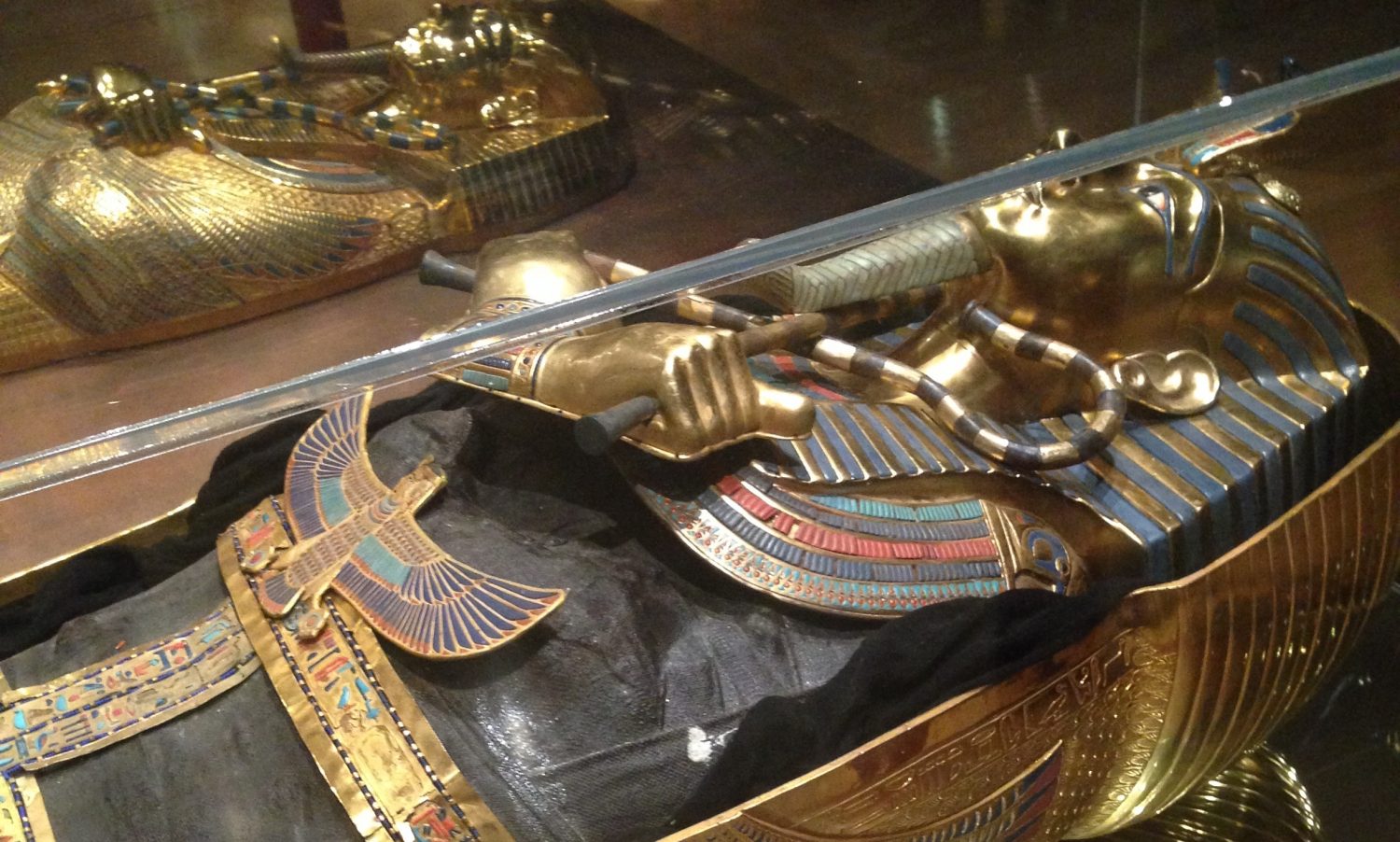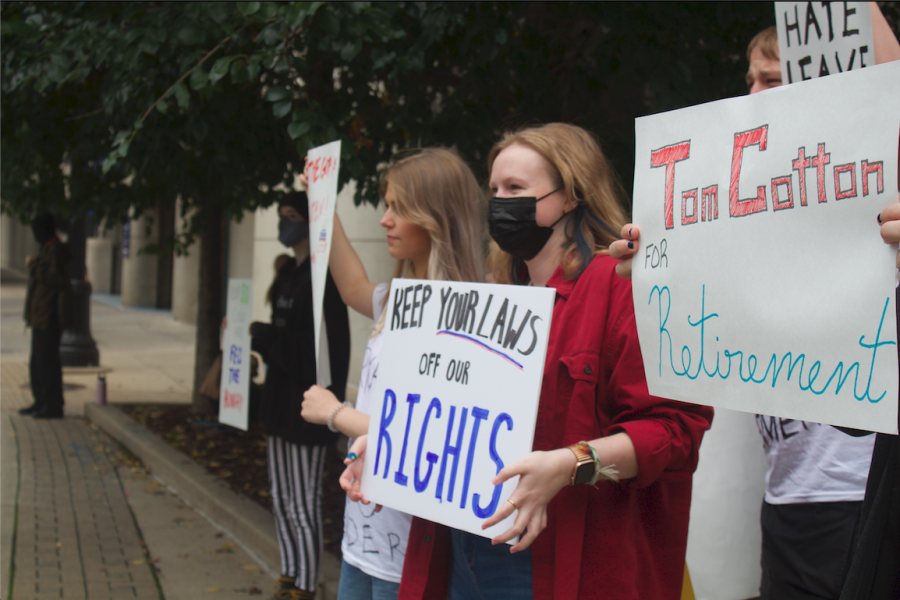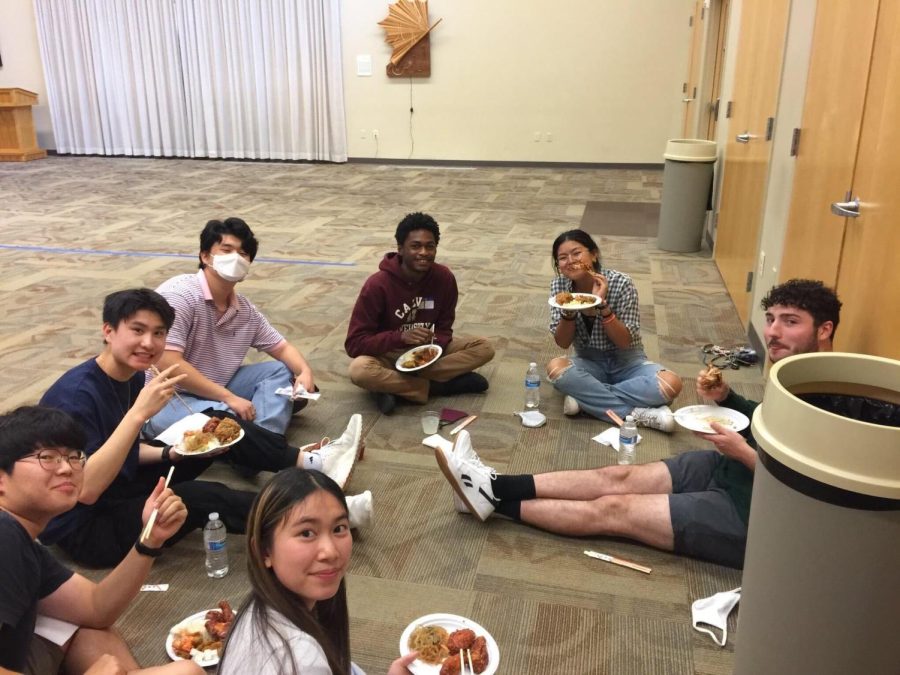Through January 2016, the Grand Rapids Public Museum (GRPM) will be home to an exclusive exhibition showcasing the life, death and tomb discovery of King Tutankhamun, more commonly known as King Tut.
Knowledge about King Tut, a historical figure who reigned as a young Egyptian pharaoh in the 18th dynasty, was limited until 1922. British archaeologist Howard Carter, along with a group of associates, found King Tut’s shrine and all of the riches that accompanied it in Egypt’s notorious royal burial location, The Valley of the Kings.
While the original pieces sit in a museum in Cairo, Egypt, the King Tut exhibit at GRPM houses replicas of nearly every artifact that sat in the tomb with King Tut. Burial jewelry, chariots, ancient Egyptian board games and the sarcophagi themselves are only a few of the many replicas that are open for public viewing.
GRPM is one of the first few stops in the King Tut exhibition tour and the first in the Great Lakes Region. Following its departure in January, the exhibition tour will cover museums all over the nation.
The tour, formally titled The Discovery of King Tut, takes place on the second and third floors of the GRPM. Upon entering the second floor, guests are introduced to audio and video, creating a multimedia experience. Guests can take advantage of several numbered stations in which additional information is given via personal radios after entering the exhibition. The first four stations, all enhanced with audio, are part of the self-tour. Afterward, the guests are led to a room with an eight minute video about Howard Carter and his team’s discovery of King Tut’s tomb.
After the video, the exhibition continues with a structured audio tour and takes guests through four different rooms, each representing a different part of Carter’s discovery of the tomb. This ranges from the four layers of shrines all the way up to a replica of the tomb itself. The tour is timed, highlighting each room in sync with the audio as to give the guest as much information as possible as they view the artifacts. In addition to the audio, each glass encased artifact and area is accompanied with plaques that describe the title and description of the artifact.
The structured audio tour ends after the four rooms. The exhibition, however, does not. The final room on the third floor is home to hundreds of replica artifacts that show exactly how extravagantly adorned the tomb of King Tut was. In addition to the solid gold inner sarcophagus and the several layers that kept it protected from the underworld, the place in which ancient Egyptians believed individuals were taken after death, the tomb is also adorned with artifacts such as elaborately decorated chariots and objects intended for protection.These include miniature figures, ointment containers, amulets and other jewelry worn on the person beneath all the layers of solid, protective encasement. Several videos and audio options are available in several areas of this final room to complement the written information available at each artifact.
Tickets to the exhibit are available both online and upon arrival at the museum. Adult tickets are $18, but discounts are given to children two and under (free), children aged 3-17 ($13) and seniors aged 62+ ($17). With purchase of tickets to the King Tut tour, guests are also given general admission, which includes the featured American Spirits: The Rise and Fall of Prohibition exhibit, as well as a free carousel ride. The exhibit is open daily, from 9 a.m. to 5 p.m. on Mondays as well as Wednesdays through Saturdays, Tuesdays from 9 a.m. to 8 p.m. and Sundays from 12 p.m. to 5 p.m. While photos are welcome, those in charge ask that the guests do not use flash photography.









